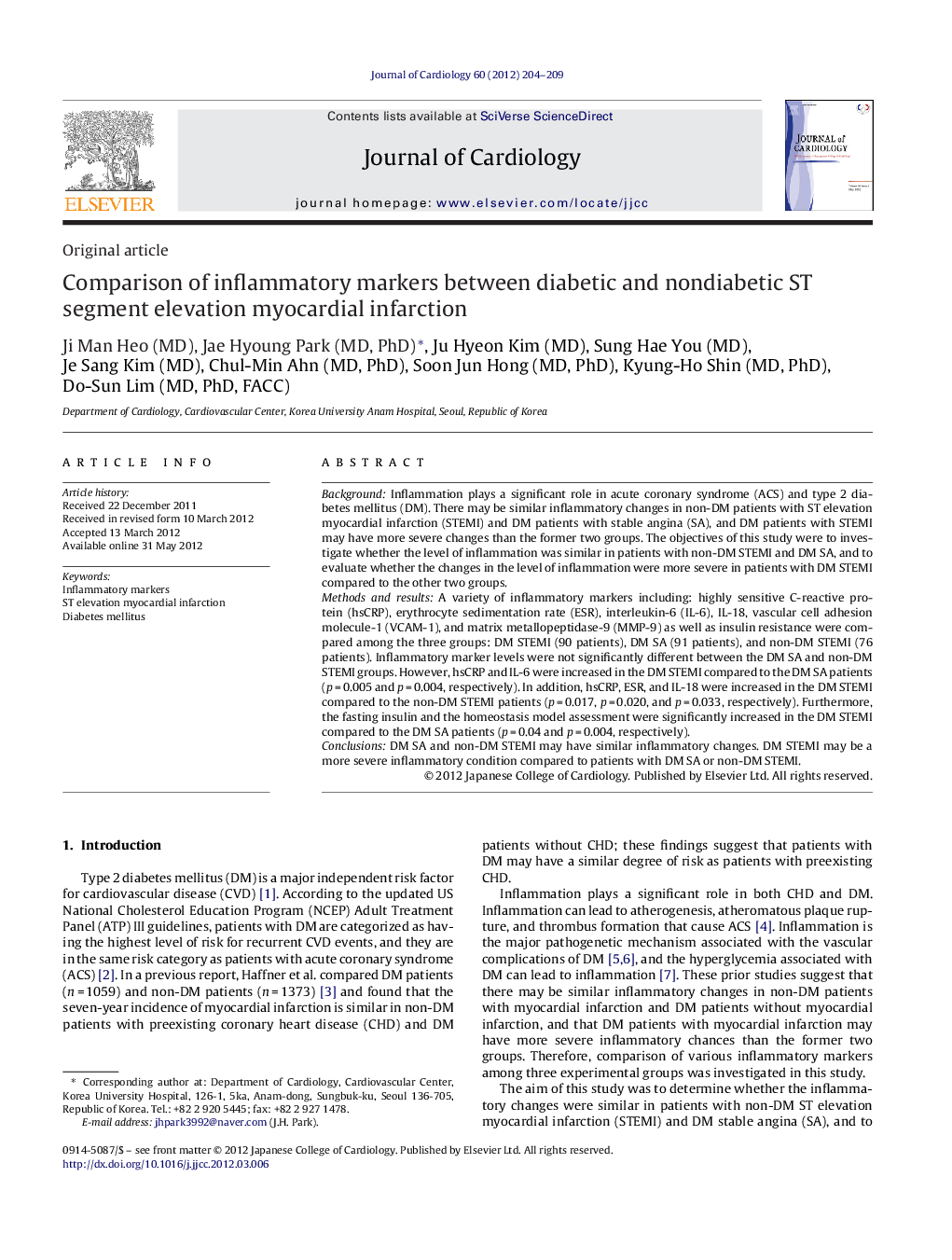| Article ID | Journal | Published Year | Pages | File Type |
|---|---|---|---|---|
| 2963131 | Journal of Cardiology | 2012 | 6 Pages |
BackgroundInflammation plays a significant role in acute coronary syndrome (ACS) and type 2 diabetes mellitus (DM). There may be similar inflammatory changes in non-DM patients with ST elevation myocardial infarction (STEMI) and DM patients with stable angina (SA), and DM patients with STEMI may have more severe changes than the former two groups. The objectives of this study were to investigate whether the level of inflammation was similar in patients with non-DM STEMI and DM SA, and to evaluate whether the changes in the level of inflammation were more severe in patients with DM STEMI compared to the other two groups.Methods and resultsA variety of inflammatory markers including: highly sensitive C-reactive protein (hsCRP), erythrocyte sedimentation rate (ESR), interleukin-6 (IL-6), IL-18, vascular cell adhesion molecule-1 (VCAM-1), and matrix metallopeptidase-9 (MMP-9) as well as insulin resistance were compared among the three groups: DM STEMI (90 patients), DM SA (91 patients), and non-DM STEMI (76 patients). Inflammatory marker levels were not significantly different between the DM SA and non-DM STEMI groups. However, hsCRP and IL-6 were increased in the DM STEMI compared to the DM SA patients (p = 0.005 and p = 0.004, respectively). In addition, hsCRP, ESR, and IL-18 were increased in the DM STEMI compared to the non-DM STEMI patients (p = 0.017, p = 0.020, and p = 0.033, respectively). Furthermore, the fasting insulin and the homeostasis model assessment were significantly increased in the DM STEMI compared to the DM SA patients (p = 0.04 and p = 0.004, respectively).ConclusionsDM SA and non-DM STEMI may have similar inflammatory changes. DM STEMI may be a more severe inflammatory condition compared to patients with DM SA or non-DM STEMI.
